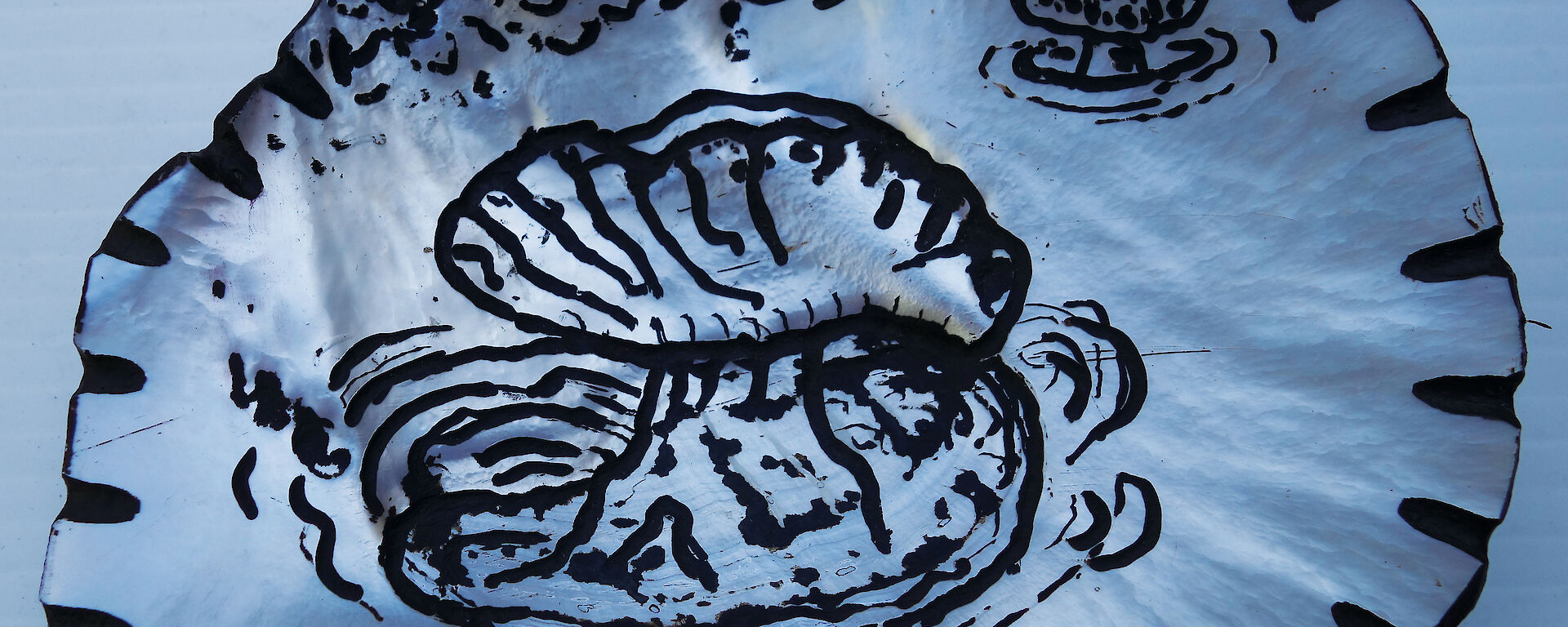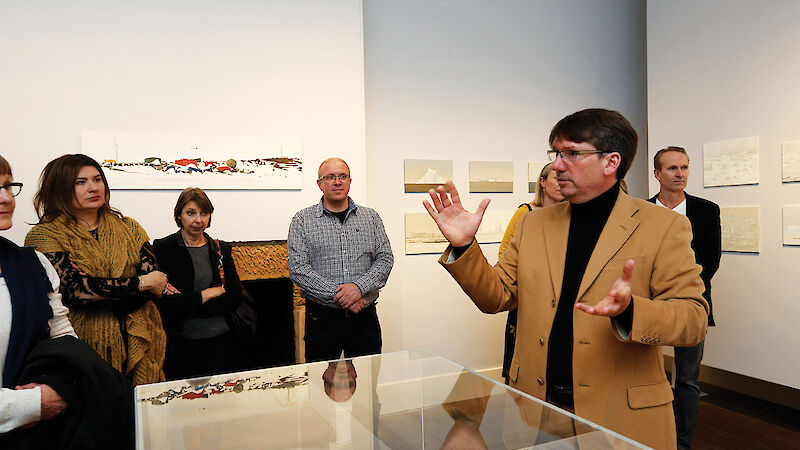Ice in your veins. It’s a term well-known by those who’ve been to Antarctica, portraying the hold the icy continent can have over people. But ice in your paintbrush… your microphone… your sketchbook? Far from being a one-off artist’s residency, the Antarctic Arts Fellow’s experience is often one that ignites an ongoing passion, sparks a new direction, and which has personal and professional impacts that reach beyond their expectations.
Lisa Roberts’ 2002 Fellowship inspired her to pursue a PhD investigating the use of animation in combining scientific data and subjective responses to the environment. Dr Roberts subsequently initiated the Living Data program at the University of Technology, Sydney (UTS), which she said aims to highlight understandings shared between scientists and artists.
‘My Antarctic experience inspired a passion to make climate change visible. Some of my ongoing work is developing the Oceanic Living Data installation which, like a scientific model, evolves to reflect new knowledge. Unlike a scientific model, this installation can be touched. You can move through it and feel part of it,’ Dr Roberts said.
In June last year she received the inaugural 12-month C3 Creative Fellowship at the UTS which she used to develop an exhibition in collaboration with UTS and Australian Antarctic Division scientists. Her work has been shown at events in Hobart, Buenos Aires, Sydney and Melbourne.
Stephen Eastaugh has definitely had ice in his paintbrush, with six Antarctic trips under his belt. Mr Eastaugh’s first visit to Antarctica in 2000 led him to seek opportunities to travel south again almost every year after that, culminating in an over-winter Arts Fellowship at Mawson station in 2009. During that year he produced over 350 artworks and wrote an artist’s travelogue. While he continues to travel and live around the world, Antarctica remains part of his work. Mr Eastaugh said some recent pieces he created in Broome marry nacreous clouds and floating boulders seen near Mawson station, with the “very Broome” medium of the pearl shell.
‘As I have spent big chunks of time in both these landscapes they had to join up somehow,’ he said.
Over the past year, some of Mr Eastaugh’s Antarctic works have featured in exhibitions in Melbourne, Broome, Amsterdam, St Petersburg, and Hong Kong.
Favel Parrett travelled on Aurora Australis for her 2012 Fellowship to research her novel When the Night Comes, based around the ship Nella Dan. As the character in her book is the ship’s cook, Ms Parrett asked to be allowed to work. She helped the crew in the kitchen, mopping decks, and with many other jobs.
‘It was the greatest trip of my life and I couldn’t have written the book without it,’ she said.
Since the launch of her book last year, Ms Parrett has appeared at writers’ festivals and bookshops across Australia, and her book is now published in four countries.
2013 Arts Fellow, John Kelly, has held many exhibitions of his Antarctic works in London, New York, Miami, San Francisco and Dublin, and published a book, Beyond Woop Woop, featuring the series of works and essays he created during his Fellowship, along with photography by some of his fellow expeditioners. He also held a major exhibition at the Tasmanian Museum and Art Gallery, which will travel to Ireland in 2016.
Sound artist Philip Samartzis is this year’s Arts Fellow, travelling to Casey station in January. Dr Samartzis was awarded a Fellowship in 2009, which he said had an enormous impact on his arts practice and his sense of self and the world. In the years following, Antarctica has been a focus of his work, with journal articles, book chapters, a book, radio commissions, performances and exhibitions in conferences, solo and group exhibitions and festivals across the globe.
‘After five years of developing various projects from my initial foray into the region I began to think about the new types of experiences and observations I could convey through a new body of work,’ Dr Samartzis said.
‘With recent advances in sound recording technology I saw an opportunity to render vivid new experiences of Antarctica, particularly weather events, which are often difficult to capture due to their extreme nature. I also want to connect my fieldwork with archival research of polar weather records to create a link between past and present.’
Now in its 30th year, the Australian Antarctic Arts Fellowship looks set to offer inspiration to artists for many years to come.
Kristin Raw
Program Manager,
Australian Antarctic Arts Fellowship



